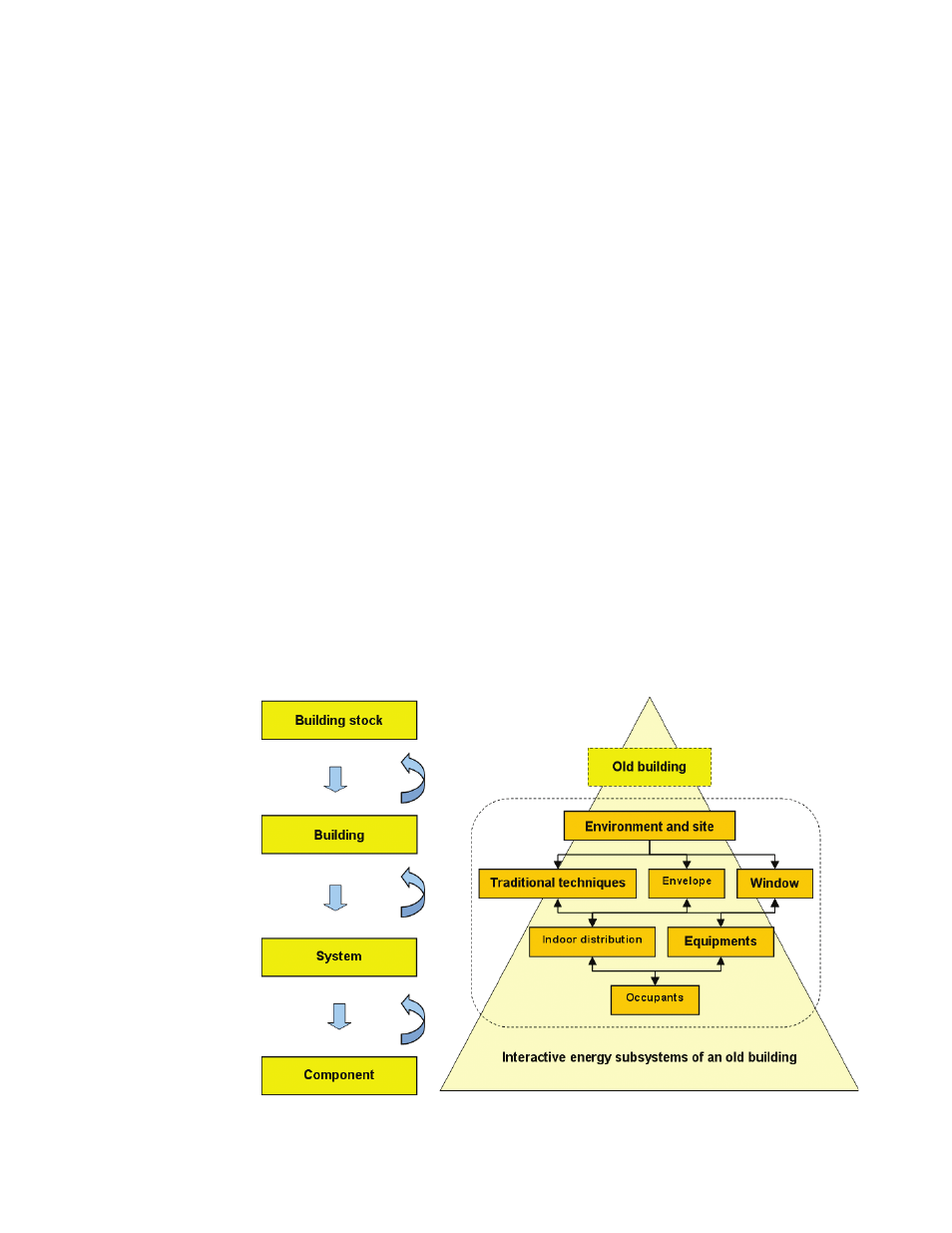Retrotec USACE User Manual
Page 390

K2 ENERGY & PROCESS ASSESSMENT PROTOCOL
Here, a building is qualifi ed as “old” if built before the emergence of the
modern architectural movement. Thus, old existing buildings constitute the
inheritance and the identity of old cities.
These buildings were constructed with the ancient expertise acquired and
worked out by specialized building craftsmen. Professional practices were
nonindustrialized, and there was signifi cant interaction between trades. The
knowledge of designers benefi ted from multidisciplinary experiments.
The simplifi cation of methods of constructive principles is acceptable for
industrialized buildings. In this type of modern building, the components are
reproducible and standardized. The combination between the elements is also
standardized. Thus, it is possible to develop analytical approaches and simpli-
fi ed models for energy simulation tools.
The situation is different with old existing buildings with strong architec-
tural identity and uniqueness. A greater variety of building elements and of
interactions between elements creates a variety of energy behaviors and of
environmental qualities. Old buildings are composed of a large diversity of
heterogeneous elements linked together by strong interactions; their archi-
tecture is more complex than the architecture of industrialized buildings. The
analytical approach of classical energy simulation tools enables the prediction
of the whole system.
When studying a building in situ, it is necessary to consider the multiple in-
teractions between the building and its environment to understand in situ energy
behaviors. The complexity of old buildings results from their design and their
history in sustainable interaction with their environment. Hence, it is inadequate
to assess with the same approach the energy and environmental behavior of dif-
ferent complex buildings designed in different architectural periods.
Figure K1. Levels of energy management, assessment, and subsystems for old buildings.
